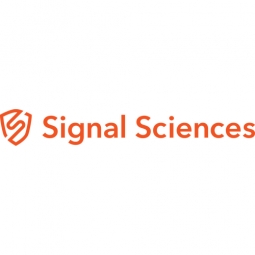下载PDF
Scaling Security and Visibility for Winning Group: An IoT Case Study
技术
- 应用基础设施与中间件 - 事件驱动型应用
- 网络与连接 - 网关
适用行业
- 电子商务
- 国家安全与国防
适用功能
- 维护
用例
- 供应链可见性(SCV)
- 交通监控
挑战
韦立集团 (Winning Group) 是一家成长中的澳大利亚家电零售商,在扩展其安全性和可见性以适应电子商务销售的增长方面面临着重大挑战。该公司经营多个网络资产,并计划未来的扩张和增长,包括并购活动。这促使需要加强应用程序层的整体安全态势,以保护面向客户的 Web 应用程序、支付网关、客户门户和 API。在实施 Signal Sciences 之前,Winning Group 使用了各种方法来保护其 Web 应用程序,包括最大限度地利用 CDN、防火墙和编码方法的最佳实践。然而,他们面临着实时可见性、由于缺乏自动化而增加的工时以及 CDN 提供商的客户体验和服务不令人满意等问题。
关于客户
韦立集团是一家总部位于澳大利亚的快速扩张的家电零售商。该公司以其名义运营多个网络资产,并正在规划未来的增长和扩张,包括合并和收购。作为其增长战略的一部分,他们认识到需要加强应用程序层的整体安全状况,以保护面向客户的 Web 应用程序、支付网关、客户门户和 API。他们正在寻找一种能够提供实时可见性、自动化手动流程并缩短事件响应时间的解决方案。
解决方案
为了应对这些挑战,韦立集团需要一个 WAF 解决方案来自动化手动流程、提高网络流量活动的可见性并缩短事件响应时间。他们选择 Signal Sciences 的下一代 WAF 是基于其行业声誉和应对公司挑战的能力。关键评估标准包括生产中的有效自动检测和阻止、与Section.io 的集成、网络攻击层流量和攻击的可见性以及自动维护。开始监控一周后,韦立集团在短短一个月内就成为了客户。通过Section.io 提供的实现,这是一个无需干预的部署和配置过程。 Signal Sciences 现在保护其四个网络资产,并计划扩展到其他网络资产。
运营影响
数量效益
相关案例.

Case Study
Data Capture for Afghanistan Forces
Electronic equipments on the field of Afghanistan provided information on the status of the vehicle and to identify potential threats surrounding it to the British Force. The monitoring and interpretation of this data requires robust and sophisticated digitization for data capture and communication.

Case Study
Digital Transformation of Atlanta Grout & Tile: An IoT Case Study
Atlanta Grout & Tile, a Tile, Stone & Grout restoration company based in Woodstock, Georgia, was facing challenges with its traditional business model. Despite steady growth over the years, the company was falling behind the web revolution and missing out on the opportunity to tap into a new consumer base. They were using independent software from different vendors for each of their department information and workforce management. This resulted in a lot of manual work on excel and the need to export/import data between different systems. This not only increased overhead costs but also slowed down their response to clients. The company also had to prepare numerous reports manually and lacked access to customer trends for effective business decision-making.
Case Study
Enhancing Security and Compliance in Remitly's Global Money Transfer Service with Fastly
Remitly, an online remittance service, was faced with the challenge of securing its proprietary global transfer network. The company needed a security solution that could meet PCI requirements and protect customers' sensitive transactions through its mobile application. The solution had to be capable of defending against new and emerging attack types without impacting performance. Remitly also had to deal with irregular traffic patterns, such as a sudden spike in account transfers from a small network segment on the Pacific coastline of South America. The company needed to determine in real time whether such traffic indicated an attack or valid requests. A traditional web application firewall (WAF) would not be able to distinguish this traffic, potentially leading to customer frustration if the IP was blacklisted.

Case Study
Major Aerospace Company Automates Asset Management
The O&M division of an aerospace and global security company was using spreadsheets to manually track more than 3,000 assets assigned to students and staff. Maintaining audit trails for this high volume of equipment became increasingly time-consuming and challenging. The chore involved knowing precisely what equipment was on hand, what had been issued, its location and the name of the custodial owner of each item. Every aspect of this task was carried owner of each item. Every aspect of this task was carried out by individuals with spreadsheets. Manually documenting the full lifecycle of each asset added to the burden. This included tracking maintenance requirements and records, incidents and damages, repairs, calibrations, depreciation, and end-of-life data.

Case Study
IFFCO Boosts IT Performance and Innovates Agriculture with Oracle Cloud
Indian Farmers Fertiliser Cooperative Ltd. (IFFCO), the world’s largest manufacturer and marketer of fertilizers in the cooperative sector, was facing several challenges in its quest to innovate and improve the livelihood of farmers in India. The organization had recently launched a new product, nano urea, which brought new demands to IFFCO’s cloud computing needs. The organization needed a reliable cloud vendor to support the processes of 6–7 new manufacturing plants during the upcoming year, enhancing its production capability 300–350 million bottles of nano urea to meet increasing demand. IFFCO’s cloud adoption was driven by a need to innovate. The organization wanted capabilities for a dynamic business that can adapt to the changing needs of the market while growing fast. However, it was inhibited by rigid on-premises data center deployments and the overhead of maintaining legacy systems. IFFCO wanted to apply the elasticity and availability of cloud for improving overall performance of applications at lowest possible operational overhead. Lastly, IFFCO needed to provide the benefits of its technology to all its stakeholders, including employees, members, transporters, and farmers, some of whom have limited literacy. To accommodate all stakeholders, IFFCO wanted to add a voice interface to its applications.

Case Study
Securing a Large Data Center in the EMEA Region: An IoT Case Study
A leading data-center operator in the EMEA region, with multiple facilities spanning over 25,000 square meters, faced significant security challenges. The operator experienced interruptions in their internal IT network due to unsupervised work of third-party technicians. Despite having a high-end building control system that provided 24x7 monitoring and control to all the building’s infrastructure, the data center was vulnerable from a cyber perspective as it was connected to the IT network infrastructure. The operator launched an urgent OT cyber security project that included both IT-OT network segmentation and OT network asset mapping and anomaly detection. The main objectives were to harden the security of the server systems, secure the facility’s power supply and server cooling system, strengthen the segmentation between building and operational systems, create a visual OT network map, and set up a system for presenting supply-chain attacks that may threaten the data center through equipment vendors’ maintenance activities.





